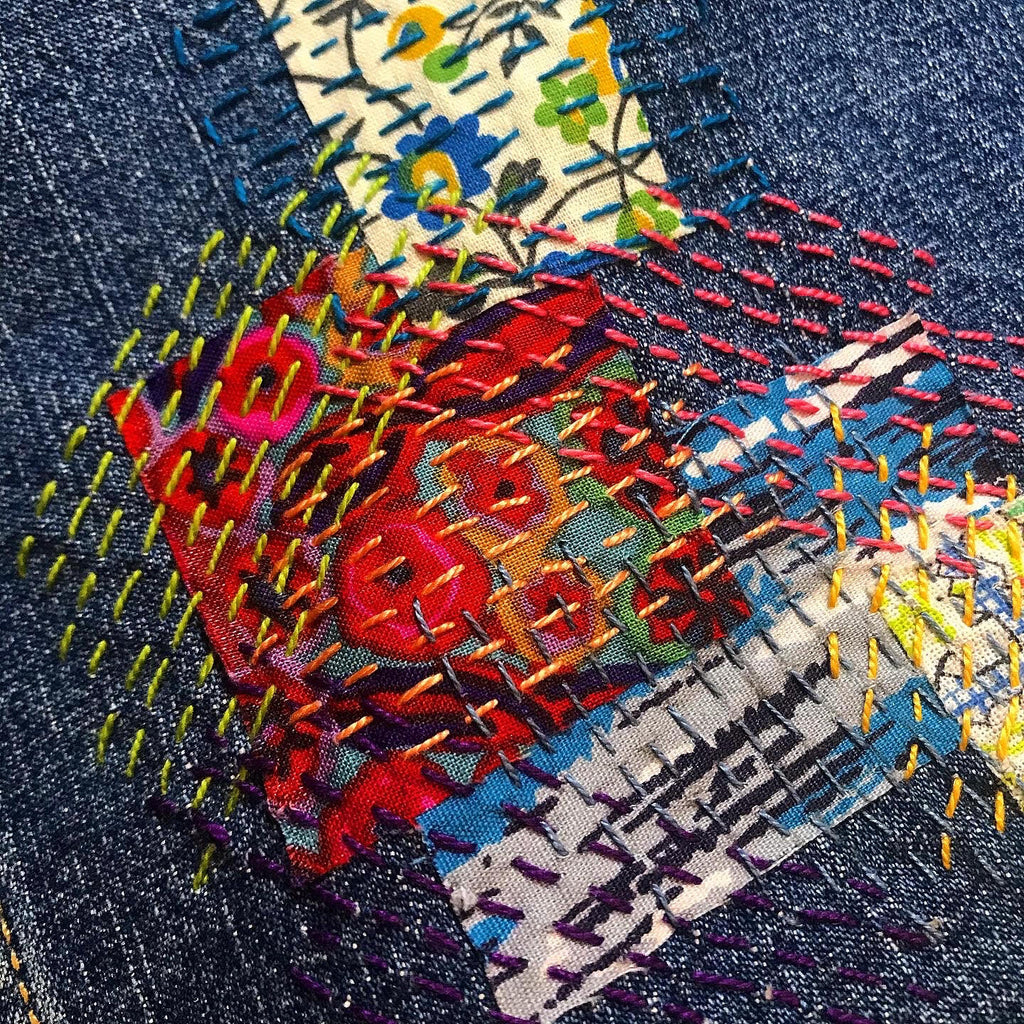Made To Last: Mindful Mending
Several mending traditions from around the world demonstrate the value that we have found now to our current problems.
“Sustainable fashion” and “upcycling” are relatively new terms, but beyond the nomenclature, are these really modern concepts? Japanese Boro, Indian Kantha and English Darning demonstrate otherwise. It is interesting to see how those we believe are modern values are not so, and how many of the answers we seek for current problems are contained in Philosophies and practices originated long ago.
Clothes were valued very differently by older generations. In the event of a garment wearing out due to the inevitable passage of time, we are looking back at upcycling and mending as techniques to extend these life cycles. Mending is a slow fashion practice that focuses on repair and stands against consumption. A humble act born of necessity has become an expression of resistance to our dismissal of the world and our environment. It has also become a way to bring us together, to re-engage with materiality, and to invite us as consumers back to understanding the contexts of makers and making.
Recent trends that involve patching and mending of clothes have been derived from earlier crafts- it is often a misconception that these ideas have emerged in recent times. The origin of this idea has grown out of the prevalent Japanese country craft ‘boro’. Derived from the Japanese word boroboro, Boro when translated literally means “tattered or repaired”. This technique combines layers of fabric and running stitch, using bits of old cloth to patch and mend textiles. These fabrics were made by repurposing carefully saved garment pieces and other hand spun and indigo-dyed fabrics in order to extend their use.
This rural domestic practice originated through necessity, as growing, spinning, weaving and dyeing the fabric was time consuming, and as a consequence the cloth was treasured and recycled. Makers carefully mended textiles such as kimonos and futon cover using this technique, repairing the same item multiple times over many generations. Over generations, these textiles would acquire more and more patches, almost to the point of the common observer being unable to recognize where the original fabric began.

The technique is not only a philosophy but a way of perceiving materials and life. It also provides us with a very specific technique to place such a philosophy into practice in our everyday life, and in particular, in our relationship with fashion. Despite the fact that is used today for artistic and decorative purposes more than functional, it is worth knowing the origin of something that today renews its meaning with such force.
The act of mending our garments goes well beyond repairing the physical cloth. By making the space and time to do so, we also mend our psychological and psychical wellbeing. This process can emotionally and physically recharge us. The process provides time for contemplation and a moment to connect with the material object, the process of recreation. Investing time in this process, builds a natural appreciation to treasure our garments and the desire to extend their life.
Contemporary practices of visible mending celebrate the potential of worn-out cloth, offering a new life to a cherished garment, with the stitching done in bold contrasting colours rather than merely being sewn in concealed threads that camouflage to hide a “fault.”

“At a macro level, the idea of repair is an ethical and ecological commitment. It is a limitless consumption; a validation of undervalued and repressed labour; a reimagined relationship to quality” – Kate Irvin. It is an open creative pursuit with endless possibilities, that allows us to engage with objects through materiality and spirituality.
- Harsimar Arora
Bibliography:
1: What is boro stitching? (no date) Zen Stitching. Available at: https://www.zenstitching.ca/blog/what-is-boro-stitching (Accessed: 20 June 2023).
2: Bryant, A. (2018) All about boro - the story of Japanese patchwork, Heddels. Available at: https://www.heddels.com/2015/08/all-about-boro-story-japanese-patchwork/ (Accessed: 22 June 2023).
3: Kate, I. (2020) The creative destruction of brokenness: Japanese boro ... - icom costume. https://costume.mini.icom.museum/wp-content/uploads/sites/10/2020/08/11.-The-Creative-Destruction-of-Brokenness_-Japanese-Boro-Repair-and-Fashion-Futures-by-Kate-Irvin.pdf (Accessed: 22 June 2023).
Want to learn more about mindful mending?
Join our upcoming workshop with Henry Skupniewicz



